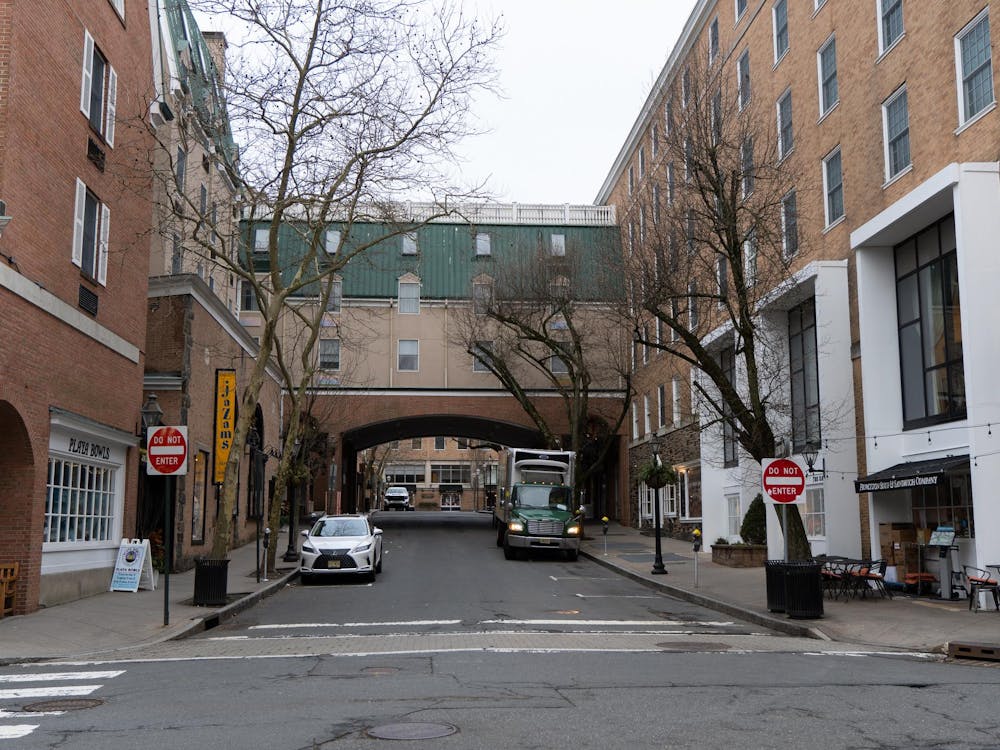Ten years ago, in 2007, Whitman College was built. Designed by the Greek architect Demetri Porphyrios, this 250,000-square foot complex now houses 500 students each year, as well as a dining area and the Writing Center. Despite this prominent role in campus life, there is surprisingly little discussion within the Princeton community about Whitman’s architecture. Busy students and faculty walk, eat, and sleep in it without thinking deeply about the space itself.
This absence of critical reflection must end. Now is the time to expose the stylistically deceitful, aesthetically unappealing, and morally dubious qualities of the architecture of Whitman College.
The architecture’s most glaring offense is its dishonesty. When Meg Whitman donated $30 million dollars to the University for the making of a new residential college, she asked for a 21st century revival of the late 19th century Collegiate Gothic style. And that is what we got: a confused set of buildings designed with highly-advanced technologies, yet pretending to belong to another era. “I am a medieval castle,” Whitman’s digitally-designed spires lie to those walking down Elm Drive. “I was built not ten, but one hundred years ago,” Whitman's machine-cut crenellations lead passersby to believe. Most of us today play along, allowing ourselves to be easily tricked by this stylistic deceit. This is shameful. As students of an institution devoted to the pursuit of genuine truth, this is glaringly hypocritical. Instead, we must see Whitman’s architecture for what it is: a systematic attempt by the University and its donors to deceive a gullible student population, as well as thousands of drooling, camera-gripping tourists.
Try as it may to emulate a neo-Gothic style, though, Whitman is no aesthetic match for Blair Arch or the Chapel. It is a poor — albeit expensive — copy, at best. Lacking the intricate ornamentation of Rocky’s dorms, Whitman’s blank stone walls that face Elm Drive are a whitewashed grey, especially lifeless on a cloudy day. Immediately apparent to those who have eaten inside, Whitman’s dining area is vastly oversized. Lacking the proportions of Wu Hall or Forbes, this “Community Hall” makes the inhabitant feel uncomfortably puny. No less unattractive are the residential areas, comprising poorly-lit dorm rooms with narrow windows and overly dark wood flooring. These areas possess neither the playful personality of New Butler’s rooms, nor the touching antiqueness of Mathey’s and Rocky’s dorms. Perhaps most visually unappealing of all is the basement of Hargadon Hall. Exacerbating the effects of the writing seminars held within, the miniscule amount of natural light getting through Hargadon’s tiny windows feels suffocating.
Even more distasteful than its deceitful nature and lack of aesthetic appeal, however, is Whitman’s failure to reflect Princeton’s core values. The University’s mission statement professes “a commitment to welcome, support, and engage students, faculty, and staff with a broad range of backgrounds and experiences.” Indeed, over the past decade Princeton has become a truly international institution; the incoming class of 2021 represents 77 different countries. Contradicting this, however, is Whitman’s conservative, close-minded retreat into a medieval style. Imitating the English campuses of Oxford and Cambridge, this reflects a worldview that is Anglo-Saxon centric. Drawing from the style of medieval society, it symbolizes inegalitarianism and class exclusion. Such associations may have been acceptable for the Princeton of the 19th century, whose admission policies reflected those values. But not for our Princeton, of the 21st century.
These problems with Whitman’s architecture are undeniable. They may be difficult to accept for many, especially those Princetonians who have made Whitman their home. But they must not be ignored. Our campus deserves better. In the future, we must demand better.
Gabriel Lipkowitz is a junior in molecular biology from Charlottesville, Va. He can be reached at gel@princeton.edu.







